The pub was formerly a Congregational church, with adjoining ‘modern glazed structure’. Since the 2002 sale of the church, it has been home to several bars. Designed by Francis Pouget, the Gothic-style Great Chapel was built in 1848, for which trustees had secured the plot or ‘the messuage formerly called The Man in the Moon’ (as described in 1818) for £500-5s. It was recorded by that name in 1739 and also in the will (14 October 1680) of John Hopkins Gent of Newport.
A photograph and text about The Man in the Moon.
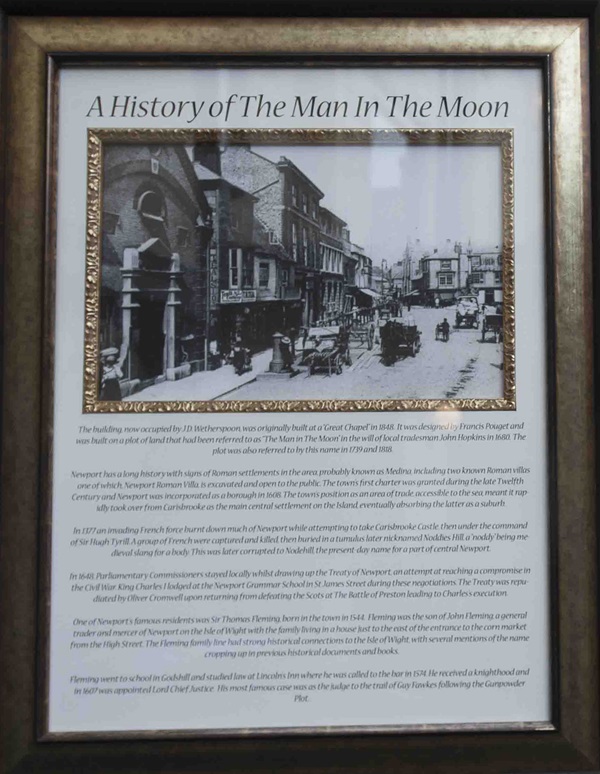
The text reads: The building, now occupied by J D Wetherspoon, was originally built as a Great Chapel in 1848. It was designed by Francis Puget and was built on a plot of land that had been referred to as The Man in the Moon in the will of local tradesman John Hopkins in 1680. The plot was also referred to by this name in 1739 and 1818.
Newport has a long history signs of Roman settlements in the area, probably known as Medina, including two known Roman villas one of which, Newport Roman Villa, is excavated and open to the public. The town’s first charter was granted during the late 12th century and Newport was incorporated as a borough in 1609. The town’s position as an area of trade, accessible to the sea, meant it rapidly took over from Carisbrooke as the main central settlement on the island, eventually absorbing the latter as a suburb.
In 1377 an invading French force burnt down much of Newport while attempting to take Carisbrooke Castle, then under the command of Sir Hugh Tyrill. A group of French men were captured and killed, then buried in a tumulus later nicknamed Noddies Hill, a “Noddy” being medieval slang for a body. This was later corrupted to Nodehill, the present-day name for a part of central Newport.
In 1648, Parliamentary Commissioners stayed locally whilst drawing up the Treaty of Newport, an attempt at reaching a compromise in the Civil War. King Charles I lodged at the Newport Grammar School in St James Street during these negotiations. The Treaty was repudiated by Oliver Cromwell upon returning from defeating the Scots at the Battle of Preston leading to Charles’s execution.
One of Newport’s famous residents was Sir Thomas Fleming, born in the town in 1544. Fleming was the son of John Fleming, a general trader and mercer of Newport on the Isle of Wight with the family living in a house just to the east of the entrance to the corn market from the High Street. The Fleming family line had strong historical connections to the Isle of Wight, with several mentions of the name cropping up in previous historical documents and books.
Fleming went to school in Godshill and studied law at Lincoln’s Inn where he was called to the bar in 1574. He received a knighthood and in 1607 was appointed Lord Chief Justice. His most famous case was as the judge to the trail of Guy Fawkes following the Gunpowder Plot.
Photographs entitled Our Night Skies, by Ainsley Bennett.
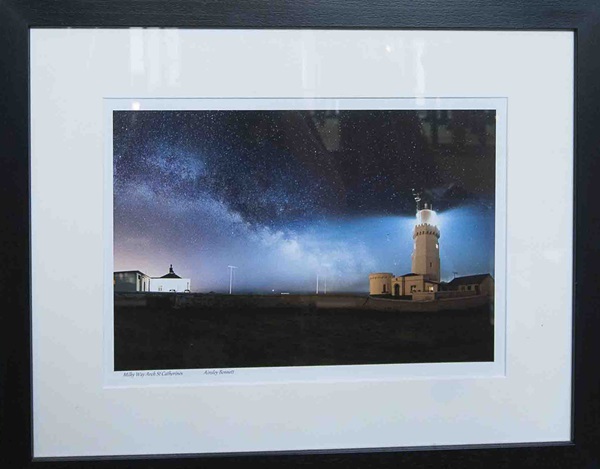
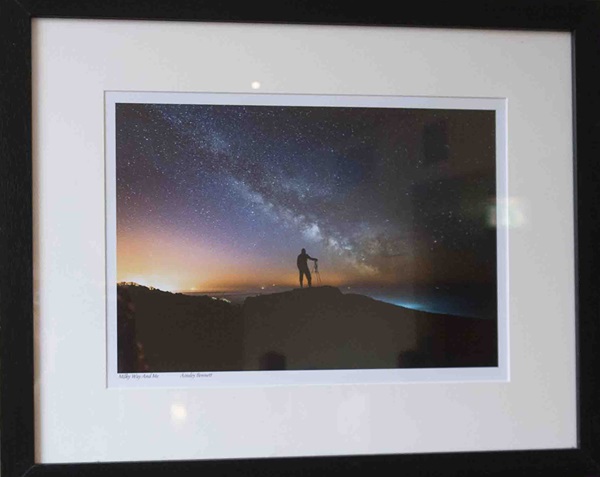
Ainsley was born in Newport, Isle of Wight and grew up on the island. The collection of images are all taken from the island over the last two years.
“I’ve always had a love for striking photographs but didn’t pick up a digital SLR until 2012. I’ve always been fascinated by the night sky and the science behind what we can see when we look up at night. I started taking images of the IOW’s very dark skies and started to develop my own style after gaining inspiration from other photographers”.
“This type of photography is becoming increasingly popular so producing individual, original images is my goal”.
Watercolour drawings entitled Draw, Smug & Festival, by Barry Ecuyer.
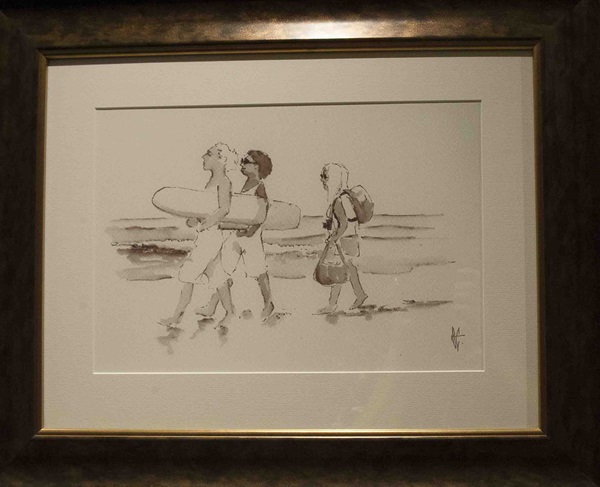
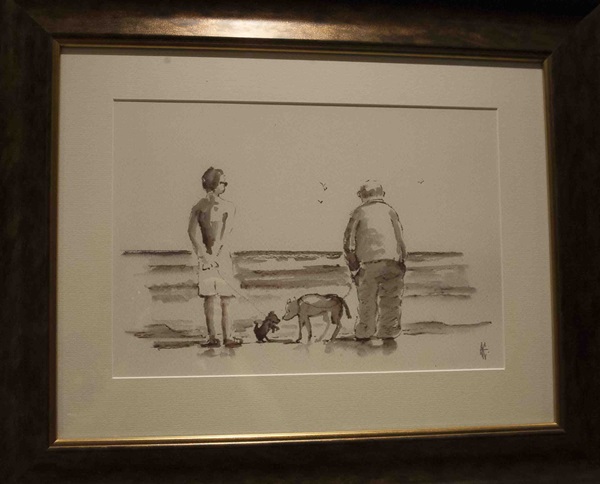
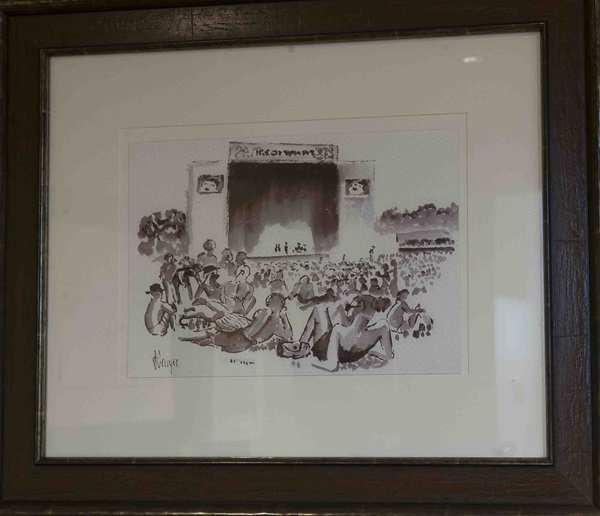
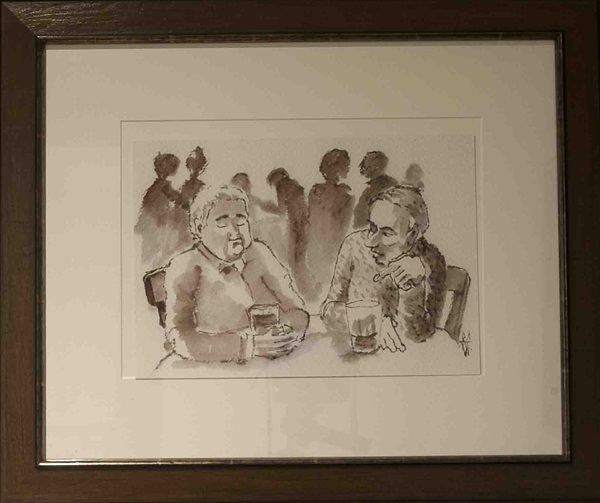
Since moving to the island in 2006 Barry has exhibited regularly with commissions coming from; the Arts Council, British Film Institute, National Trust, mural work at Chatsworth House and now J D Wetherspoon.
“My inspiration comes from the beauty of everyday life here on the island. The places, the views and the people. Drawing has been a lifelong passion, I enjoy the challenge of new subjects and different media, digital art and diagrams, sculpture and printmaking, landscapes and portraits, illustrations and cartoons”.
Internal photographs of the pub, including the Great Chapel.
This pub is the former Newport Congregational Church. Designed by Francis Pouget, the Gothic style 'Great Chapel' was built in 1848.
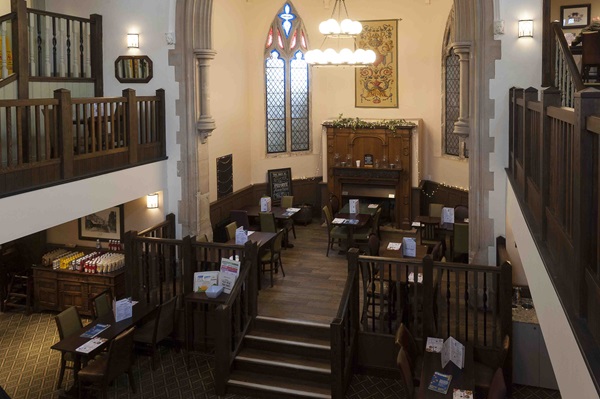
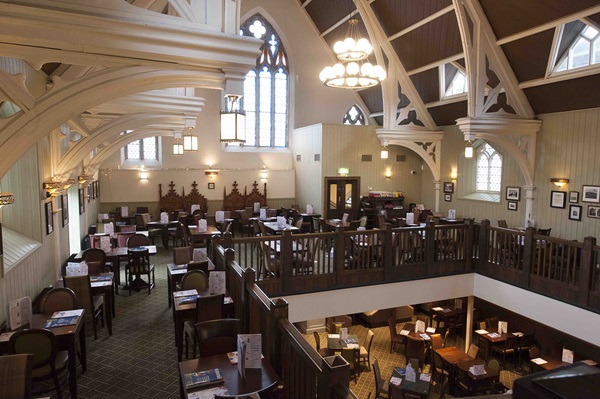
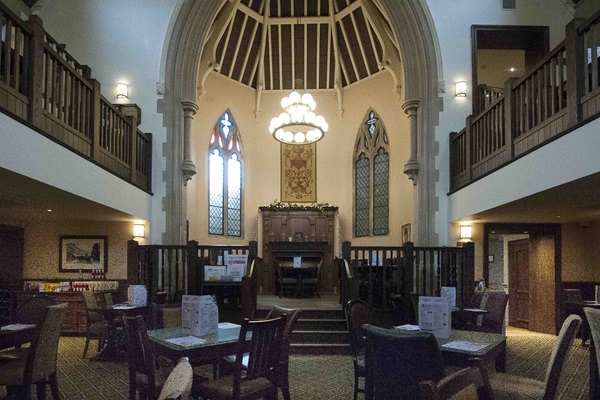
Photographs of the old Newport Congregational Church.
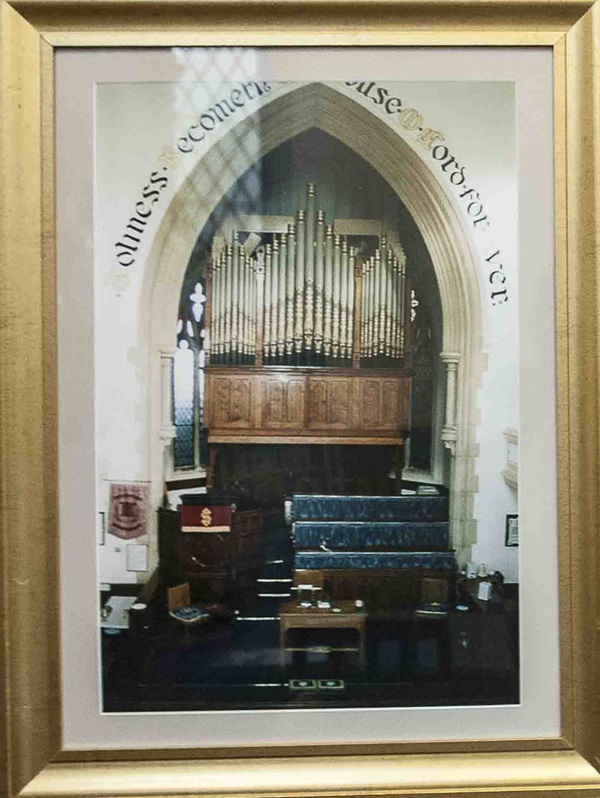
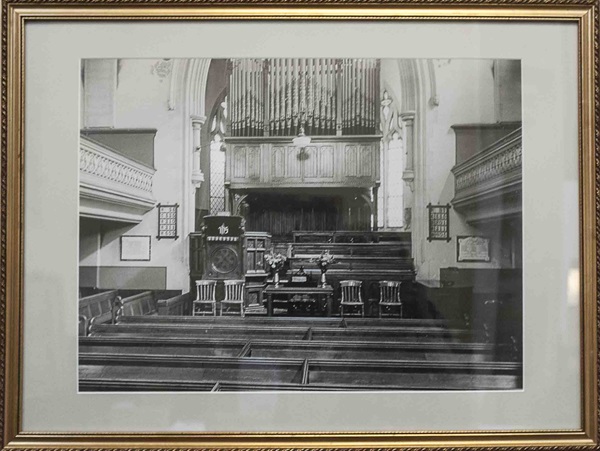
External photograph of the building – main entrance.
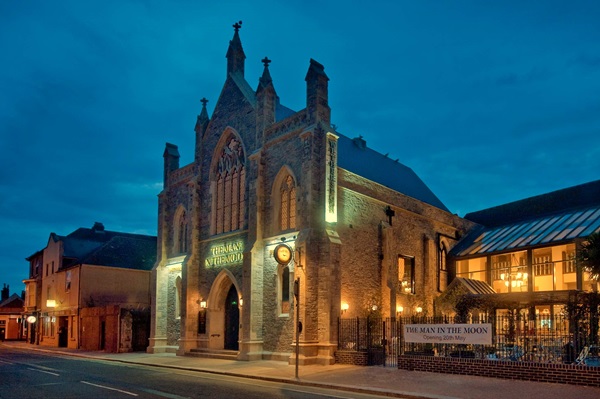
If you have information on the history of this pub, then we’d like you to share it with us. Please e-mail all information to: pubhistories@jdwetherspoon.co.uk